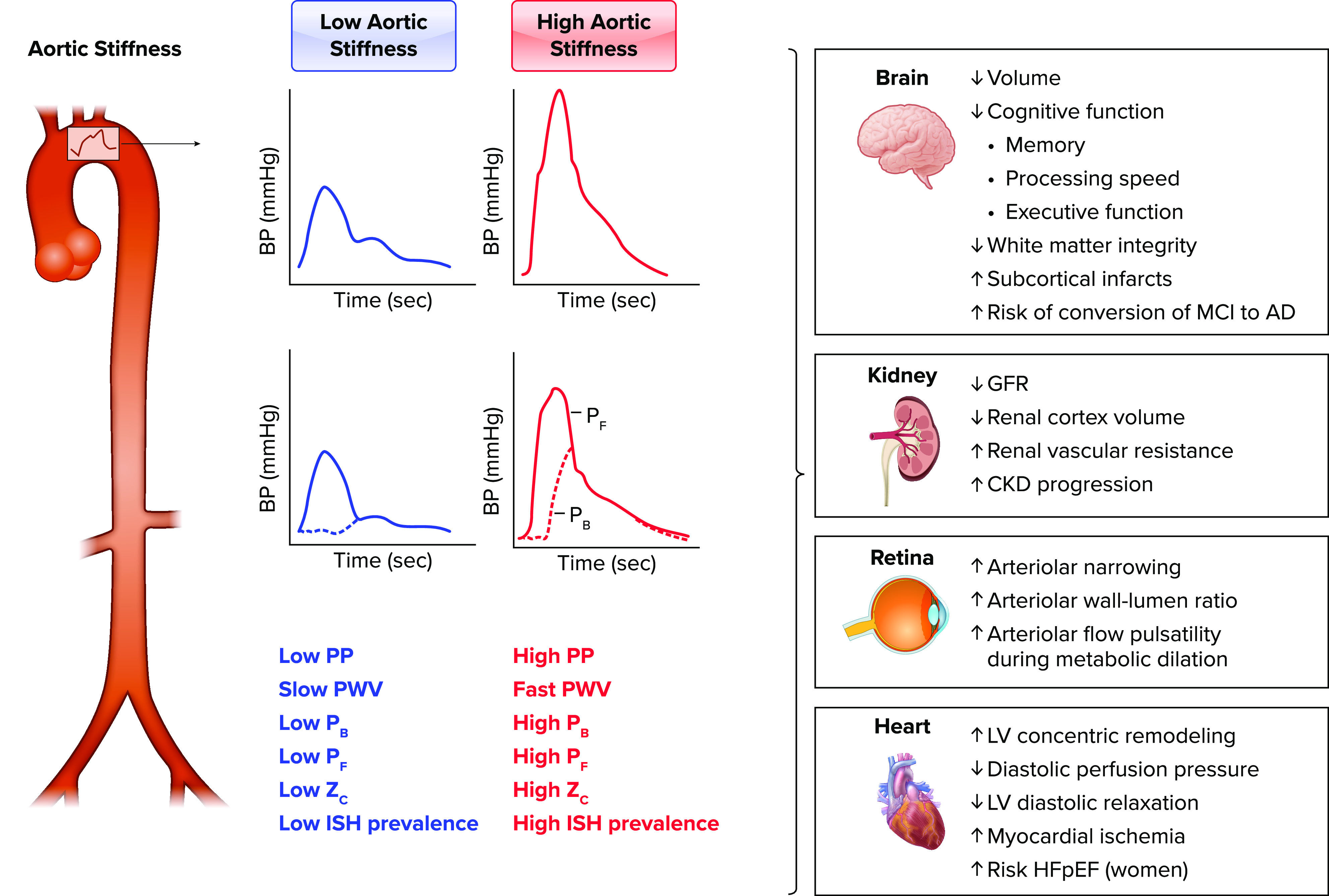FIGURE 1.

Elevated aortic stiffness is associated with target organ damage to brain, kidney, retina, and heart Low aortic stiffness is associated with low aortic pulse pressure (PP), slow carotid-femoral pulse wave velocity (PWV), low amplitude of reflected or backward reflected waves (Pb), low forward pressure wave amplitude (Pf), low aortic characteristic impedance (Zc), and low prevalence of isolated systolic hypertension (ISH), whereas high aortic stiffness is associated with high aortic PP, fast carotid-femoral PWV, high Pb, high Pf, high aortic Zc, and higher prevalence of ISH. Higher aortic stiffness is associated with decreases in brain volume, decline in cognitive functions including memory, processing speed, and executive function, reduced white matter integrity, increased subcortical infarcts, and higher risk of conversion of mild cognitive impairment (MCI) to Alzheimer’s disease (AD); kidney damage including lower glomerular filtration rate (GFR), decreased renal cortex volume, elevated renal vascular resistance, and progression of chronic kidney disease (CKD); retinal remodeling including increased arteriolar narrowing, increased arteriolar wall-lumen ratio, and increased flow pulsatility during local metabolic vasodilation; and adverse heart outcomes including increased left ventricular (LV) concentric remodeling, decreased diastolic perfusion pressure, increased myocardial ischemia, and higher risk of heart failure with preserved ejection fraction (HFpEF) among women. BP, blood pressure.
